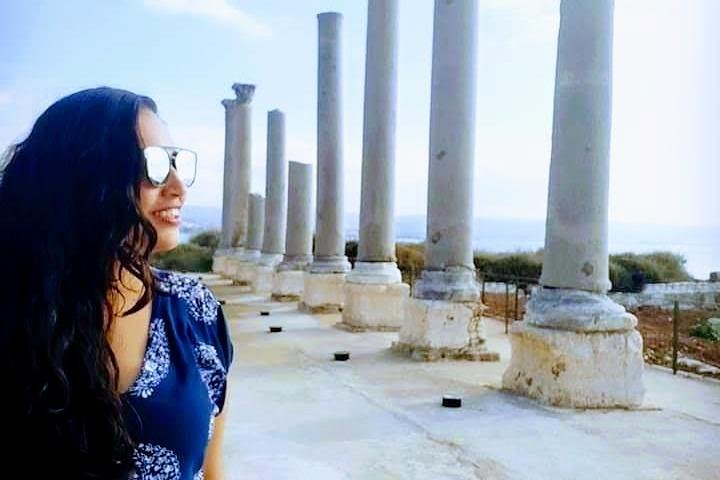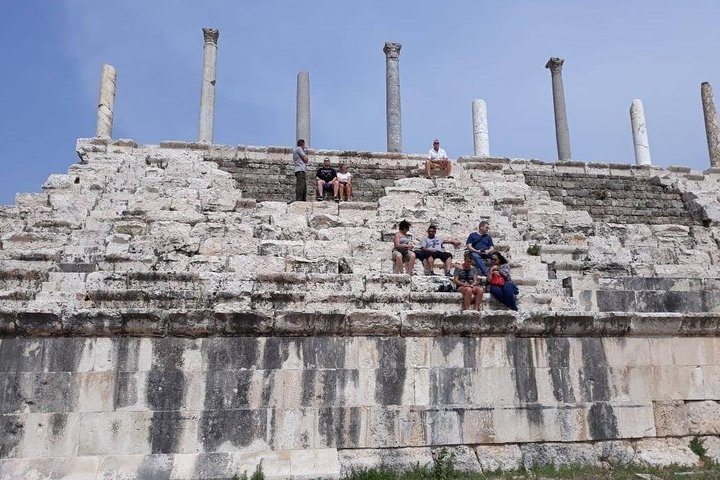Why choose this tour ?
Explore the captivating history and vibrant culture of Sidon, Tyre, and Maghdouché on our private tour. From ancient ruins to sacred sites, join us for an unforgettable adventure through Lebanon's rich past and present. Uncover secrets of civilizations, savor local cuisine, and immerse yourself in the warm hospitality of these timeless destinations. Embark on this extraordinary journey with us and experience the magic of Sidon, Tyre, and Maghdouché.
 Add to wishlist.
Add to wishlist.
 Give this as a gift: Give the ones you love unforgettable travel experiences and make memories to last a lifetime.
Give this as a gift: Give the ones you love unforgettable travel experiences and make memories to last a lifetime.
 Reserve now & pay later to book your spot and pay nothing today.
Reserve now & pay later to book your spot and pay nothing today.
 Free cancellation up to 24 hours before the experience starts (local time).
Free cancellation up to 24 hours before the experience starts (local time).
Make the most of your adventure
What makes Discover Sidon, Tyre, and Maghdouché: A Journey Through Time a unique experience ?
The Sidon Sea Castle was built by the crusaders in the thirteenth century on a small island, connected to the mainland by a causeway, as a fortress of the holy land. It is one of the most prominent historical sites in the port city of Sidon, Lebanon. The castle was largely destroyed by the Mamluks in 1291 and was later restored by Fakhr el-Dine Maan II in the early 17th century. Old prints of the fortress show it to be one of great beauty, but little remains of the embellishments that once decorated its ramparts.
Khan al-Franj is one of Sidon’s main attractions. It was built in the beginning of the 17th century by Emir Fakhreddine II to be a hotel for ambassadors and a center for commercial exchange between Lebanon and France. The hotel soon became a center for literature, religion, history, industry and diplomacy. It became a home for culture and civilization. This is a typical khan with a large rectangular courtyard and a central fountain surrounded by covered galleries.
The Soap Museum is a museum in Sidon specialized in Levantine soaps The soap workshop was originally built in Sidon by the Hammoud family in the 17th century. The Soap Museum traces the history of soap making in the region, its development and manufacturing techniques. Visitors can see a demonstration of how traditional olive oil soaps are made and learn about the history of the "hammam" (bath) traditions. A historical section of the museum introduces artifacts which were found during onsite excavation and which include remains of clay pipe heads dating from the 17th to 19th century as well as pottery fragments. The Museum building is an old soap factory built in the 17th century, although containing parts thought to date back to the 13th century.
The souk of Sidon is the center of all the commercial activities of retail, as well as craft industry. The souk is a maze of narrow alleyways with small kiosks, shops and cafes, street merchant, butchers, grocers, shoe-makers, tailors and jewelers.
Our Lady of Awaiting, also known as Our Lady of Mantara, is a Melkite Greek Catholic shrine in Maghdouché, Lebanon, discovered on 8 September 1721 by a young shepherd. The shrine consists of a tower crowned with the statue of the Virgin and Child, a cathedral, a cemetery and a sacred cave believed to be the one where the Virgin Mary rested while she waited for Jesus.
Tyre is an ancient Phoenician port city and It is the home of Elissar, the Phoenician princess who founded Carthage. It was once famous across the world for its purple dye made from murex sea snails. Two main archaeological sites – “Al-Bass” and “Al-Mina” – are testimony to its historical significance. It has a wonderful seaside location and It's a popular holiday destination with excellent and cleanest beaches The town's foundations date back to approximately 2750 BC, after which it was ruled by the Egyptians and then the famous King Hiram, under whom it prospered. Later colonized variously by the Assyrians, Neo-Babylonians, Greeks, Seleucids, Romans, Byzantines, Arabs, Crusaders, Mamluks and Ottomans.
Al Bass Archaeological Site is the largest and the best-preserved example of a Roman Hippodrome. The sector of Tyre El Bass, constituting the principal entrance of the town in antique times, comprises the remains of the necropolis, on either side of a wide monumental causeway dominated by a Roman triumphal arch dating from the 2nd century AD. Among the other vestiges are an aqueduct and the hippodrome of the 2nd century, one of the largest of the Roman world. site contain a Necropolis with several hundred well-preserved sarcophagi, an intact Roman road, an aqueduct and a monumental arch.
Tyre used to have two harbors: the Sidonian in the north and the Egyptian harbor in the south. Today, the port of Tyre is a busy fisherman's port and the remains of a 750 meter long mole can still be seen, and it is easy to recognize the remains of some ancient buildings in the water.
Tour Description & Additional Info:
- Specialized infant seats are available
- Suitable for all physical fitness levels
Options To Choose for Your Trip:
- Discover Sidon, Tyre, and Maghdouché: A Journey Through Time
Add
Pickup included
- Tour Leader
- Hotel Pick up & Drop off
- Gratuities
Trending Nearby Tours Likely To Sell Out
Special Instructions:
- This Tour is Provided by Lebanon Daily Tours.
- Tour Timezone & Starts at Asia/Beirut.
- Mobile or paper ticket accepted.
- For a full refund, cancel at least 24 hours before the scheduled departure time.
- Minimum 1 Travelers is required to book.
- Maximum 9 Travelers is accepted for booking.









